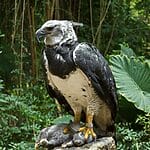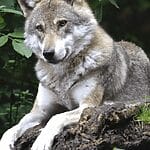Energy and activity are paramount in the animal kingdom, driving essential behaviors for survival, reproduction, and ecological balance. Highly energetic animals, from the acrobatic squirrel monkey to the swift cheetah, navigate dynamic ecosystems with precision.
Energy fuels pursuits, enabling predator-prey interactions, mating rituals, and territorial defense. Adaptations like streamlined bodies, powerful muscles, and efficient metabolic processes define these creatures, optimizing energy utilization for specialized tasks.
In the intricate tapestry of life, the constant pursuit of energy is the heartbeat of ecosystems. Foraging, hunting, and territorial displays are fueled by the relentless drive for sustenance and dominance.
High activity levels also play a crucial role in nutrient cycling and ecosystem health. From pollination by energetic hummingbirds to the dispersion of seeds by agile rodents, these actions contribute to the resilience and biodiversity of habitats. Ultimately, the importance of energy and activity in the animal kingdom is a testament to the evolutionary strategies that shape the diverse and interconnected web of life on Earth.
The Top 6 Energetic Animals in the Wild
1 – The Agile Cheetahs

Cheetahs, Earth’s fastest land animals, boast a streamlined anatomy designed for speed. Their lightweight frame, long legs, and powerful muscles generate explosive acceleration. Adaptations like non-retractable claws and specialized respiratory and cardiovascular systems optimize their sprinting abilities. Cheetahs employ a unique hunting strategy, relying on unparalleled bursts of speed to catch prey.
However, this swiftness comes with challenges. Prolonged chases deplete cheetahs’ energy rapidly, leaving them vulnerable to scavengers. Human encroachment, habitat loss, and reduced prey populations compound survival challenges for these remarkable predators, highlighting the delicate balance between speed-driven hunting prowess and the threats of a changing environment.
2 – The Boundless Hummingbirds
Hummingbirds, nature’s avian acrobats, possess unique features that enable their mesmerizing hovering and rapid flight. Their remarkable wing structure allows figure-eight motion, generating lift and sustained hovering. With the ability to beat their wings up to 80 times per second, they achieve astonishing speeds.
To fuel such high-energy endeavors, hummingbirds rely on a specialized diet of nectar, supplemented by insects for protein. As they feed, their heads plunge deep into flowers, facilitating inadvertent pollen transfer and making them vital pollinators. The intricate interplay of rapid flight, specialized diet, and inadvertent pollination showcases the extraordinary adaptations defining hummingbirds’ ecological significance.
3 – The Dynamic Dolphins

Dolphins, renowned for their playful and energetic demeanor, engage in a myriad of social behaviors that mirror their high intelligence. Playful antics, such as leaping, tail-slapping, and riding waves, showcase their exuberance. Communication among dolphins is intricate, involving a diverse range of clicks, whistles, and body language, fostering complex social bonds.
These marine mammals often form tight-knit pods, collaborating in hunting and protection. Their social interactions extend to altruistic behaviors, with dolphins aiding injured or distressed individuals. The blend of playfulness, communication skills, and cooperative social structures underlines the vibrant and intelligent nature of these captivating marine creatures.
4 – The Spirited Squirrel Monkeys
Squirrel monkeys, inhabitants of tropical rainforests, showcase remarkable acrobatic prowess and vibrant social behaviors. Their lithe bodies and long tails facilitate agile movements through dense canopies, while strong prehensile tails aid in balancing. Living in large, tight-knit groups, these monkeys engage in complex social interactions, fostering cooperation and communication.
Their high-energy lifestyle involves frenetic tree-to-tree travel, rapid jumps, and intricate leaps, reflecting an adaptability crucial for foraging and evading predators. This dynamic combination of acrobatics and sociality defines the exuberant existence of squirrel monkeys, illustrating how their evolutionary traits have evolved to thrive in the challenging ecosystems of tropical rainforests.
5 – The Vibrant Kangaroos
Kangaroos, iconic marsupials of the Australian outback, boast powerful hind legs that define their distinctive hopping locomotion. Their elongated and muscular hind limbs, combined with a strong tail, enable remarkable propulsion and energy efficiency in hopping. This allows them to cover vast distances effortlessly.
This adaptation is a response to the arid landscapes that kangaroos inhabit, allowing them to conserve energy while foraging for sparse vegetation. Well-adapted to the harsh conditions, kangaroos also have a unique reproductive strategy, carrying and nursing their young in pouches. The evolutionary mastery of their locomotion and reproductive adaptations highlight the kangaroo’s resilience and efficiency in navigating the challenging Australian environment.
6 – The Busy Ants

Ant colonies exemplify specialized roles and remarkable resourcefulness in their complex societies. Worker ants diligently forage for fresh leaves, which they cut into manageable pieces and carry back to the nest. Within the nest, other ants cultivate fungus on these leaf fragments, forming a symbiotic relationship.
The fungus serves as their primary food source. The ants meticulously tend to the fungus, ensuring its health and preventing the growth of harmful pathogens. This agricultural practice, unique among insects, showcases the ants’ sophisticated division of labor, adaptability, and sustainable food production, underscoring their evolutionary brilliance in maintaining colony prosperity.
The Science Behind Endless Energy
Energy Metabolism and Adaptations
Animals that maintain high energy levels exhibit remarkable physiological adaptations honed through evolution. Enhanced metabolic pathways are crucial; hyperactive species often possess efficient respiratory and cardiovascular systems, allowing rapid oxygen delivery to fuel demanding activities. Muscle structures are finely tuned, balancing strength and endurance, evident in the powerful hind legs of kangaroos or the sleek bodies of dolphins.
Energy-efficient thermoregulation is also vital. Desert-dwellers, like the Fennec fox, have evolved efficient cooling mechanisms to endure high temperatures without excessive energy expenditure. Likewise, the streamlined bodies of aquatic animals minimize drag, optimizing energy use during constant motion.
Evolutionary adaptations extend to dietary strategies, such as the specialized digestive systems of herbivores or the energy-dense diets of carnivores. Animals often display behavioral adaptations too, like strategic rest patterns or cooperative hunting, all aimed at sustaining perpetual motion. In this dynamic dance, the physiological intricacies crafted by evolution empower animals to meet the ceaseless demands of their high-energy lifestyles, ensuring their success in diverse and challenging environments.









